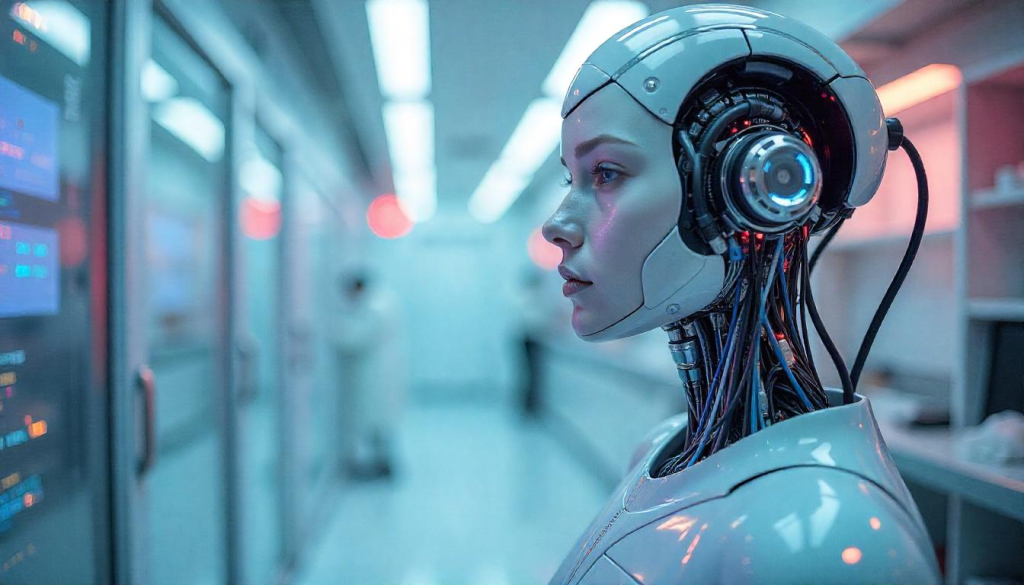In recent years, artificial intelligence (AI) has rapidly entered our daily lives—from voice assistants and self-driving cars to content generation tools like ChatGPT. As more people use AI to write essays, articles, and social media posts, the demand for AI detectors has grown too. But the big question is: Are AI detectors accurate? Can they really tell if a piece of content was written by a machine or a human? Let’s explore this important topic in simple language, with real-world examples and a touch of human insight.

What Is an AI Detector?
An AI detector is a tool that tries to figure out whether a piece of text was written by a human or generated by AI. It scans the content and looks for patterns or signals that match AI-generated writing. Most detectors use machine learning models trained on large samples of AI and human-written text. Some popular AI detectors include:
-
Originality.ai
-
GPTZero
-
OpenAI’s AI Text Classifier (now discontinued)
-
Turnitin AI Detection
-
Copyleaks AI Detector
These tools often give a score or percentage that shows how likely the content is AI-written.
Why People Use AI Detectors
There are many situations where detecting AI-generated content matters. Here are a few:
-
Teachers want to know if a student used AI to write an assignment.
-
Blog owners want to avoid Google penalties for publishing AI-generated articles.
-
Recruiters want to check if job applications were written by the applicant or AI.
-
Publishers want to verify originality before accepting articles or books.
Clearly, AI detection serves a real purpose—but only if it works accurately.
Are AI Detectors Always Right?
Here’s the short answer: No, AI detectors are not always accurate. Most AI detectors claim accuracy levels between 70% and 90%, but in the real world, they often make false positives (calling a human-written text AI) or false negatives (missing AI-written content). Let’s break down the common issues:
1. False Positives
A false positive happens when a detector marks human writing as AI-generated. This can be frustrating, especially for students or writers accused of using AI when they didn’t.
Example:
A college student writes a heartfelt personal essay about their childhood. The detector flags it as AI-written because it’s too “perfect.” That’s unfair and harmful.
2. False Negatives
A false negative is when a piece of AI-generated content passes as human-written. This often happens with newer AI models like GPT-4, which can mimic human tone very well.
Example:
An AI writes a blog post using casual language, emojis, and slang. The detector thinks it’s human-written—even though it’s 100% AI.
Why AI Detectors Struggle
There are a few reasons why AI detectors aren’t perfect:
A. AI Writing Is Getting Better
Modern AI tools like ChatGPT and Claude can write in a very natural, human-like way. They understand tone, emotion, structure, and even humor. This makes it hard for detectors to keep up.
B. AI Detectors Rely on Patterns
AI detectors work by spotting patterns in the text, such as word repetition, sentence structure, or predictability. But skilled human writers sometimes follow these same patterns. And AI tools are learning to avoid them.
C. Detectors Can’t Read Context or Emotion
Human writing often includes personal stories, cultural references, or deep emotions. AI detectors can’t always understand these. Sometimes, they misread creative writing or emotional storytelling as AI-made.
D. Editing Confuses Detection
If someone edits AI-written content by hand, the detector may no longer flag it. Even minor edits can make the AI-generated content seem more “human.” This is a common way people bypass detection.
What Do Experts Say?
Many researchers and educators are cautious about fully trusting AI detectors.
-
OpenAI, the company behind ChatGPT, discontinued their own AI detection tool in 2023, admitting it wasn’t reliable enough.
-
Turnitin, used in many schools, has faced criticism for false positives and lack of transparency.
-
Academics have raised concerns about students being wrongly accused, damaging trust in education.
The takeaway? Even experts admit that AI detection is an imperfect science.
So, Should You Trust AI Detectors?
AI detectors can be useful tools, but they should not be the final judge. Here are a few tips to keep in mind:
✅ Use Them as a Guide, Not a Verdict
If a detector says your content is AI-written, treat it as a signal, not a proof. Always cross-check or ask for a second opinion.
✅ Combine With Human Review
The best results come when AI detection is paired with human judgment. A teacher, editor, or reviewer can add context and critical thinking that a machine can’t.
✅ Avoid Blind Dependence
Don’t make important decisions—like grading, hiring, or publishing—based only on AI detection tools. They’re not 100% reliable.
The Future of AI Detection
As AI continues to evolve, detection tools will need to improve too. Some exciting directions include:
-
Watermarking AI content at the time of creation.
-
Using metadata and writing behavior analysis.
-
Building hybrid systems combining machine learning and human judgment.
But the race will be ongoing. As long as AI writing improves, detecting it will remain a challenge.
Final Thoughts: Human vs. AI
So, are AI detectors accurate? Sometimes. But not always. They can catch obvious AI writing, especially from earlier tools. But with today’s powerful models and human editing, even the best detectors can be fooled—or make mistakes. In the end, nothing beats human intuition, experience, and critical thinking. Whether you’re a teacher, a writer, or a reader, it’s wise to use AI detectors with caution, not as a final authority. After all, the line between human and machine writing is becoming blurrier every day. But that doesn’t mean we stop asking questions, using our judgment, and thinking for ourselves.